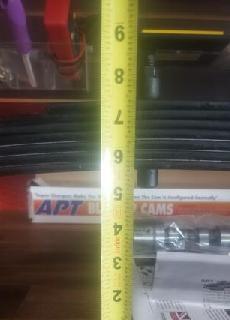The MGA With An Attitude
LEAF SPRINGS Thickness Matters -- RS-105C
I will start with the leaf spring inverted for this example, because it looks like the diagrams we normally see for beam loading.



The last formula above comes from substitution of the formula for moment of inertia of a rectangular beam (seen at left) in place of "I".
Delta (that little triangle) is deflection. "E" is the Modulus Of Elasticity (of steel in this case), which is a fixed number that never changes. "P" is the applied load. "L" is the length between supports. "b" and "h" are dimensions of the cross section of the beam, which in this case is a spring leaf. For our compound leaf spring, every leaf is the same thickness, so the proportions of the formula can apply to the complete spring assembly as well as the single leaf. Discussion here is all about "h", an why the thickness of the spring steel leaf matters so much.
It can be seen by this formula that stiffness of the spring varies as the cube of the leaf thickness. A small decrease of thickness makes the spring softer and makes a relatively large increase of deflection. A small increase of thickness makes the spring much more firm, and makes a relatively large decrease of deflection. This matters a LOT when a replacement spring is made with too-thick of spring steel sheet or bar stock.


Now we have measurements of two springs, a decades old original spring on the left, and a new replacement spring on the right. Divide overall spring thickness by 7 to get thickness of a single leaf.
15.3-11.4=3.9cm
3.9/2.54=1.54in
1.54/7=0.22in
That is the 7/32" thick spring leafs.
|
7 13/32 - 5 21/32 = 1-3/4in
1 3/4 / 7 = 1/4in = 0.25in
That is 1/4" thick spring leafs.
|
Original spring spec's are spring rate = 125 lb.in, resulting in 3.6" deflection when fully laden with 450 pounds per spring. Changing leaf thickness from 7/32" to 8/32" results in spring rate = 186 lb/in, and deflection of 2.41". It is not so much the 0.6" inch over-arch in the new springs that bothers me, but add to that the decrease of deflection, and the rear end of the car ends up sitting more then 1-3/4" too high under full load.
That 1/32" excess leaf thickness is HUGE, so we need to rag on the supplier to get that set back to the original 7/32" thickness if at all possible.
|